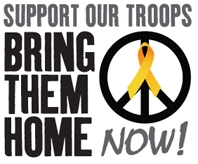Micromanagement for Dummies
Never tell people how to do things. Tell them what to do, and they will surprise you with their ingenuity.
--General George Patton, Jr.
--General George Patton, Jr.
Patton's statement is a caution against micromanagement. Neither the civilian authority nor the Army Chief of Staff should concern himself with the tactical employment of individual small maneuver units.
Now the supreme civilian commander is concerned with the employment of a single division, and/or five Army maneuver brigades. The rule of thumb in the U.S. Army is that a commander does not control the movement or employment of units two levels below his control.
A theater Commander moves Corps; a Corps Commander moves Divisions; a Division Commander moves Brigades. This is the usual course of military control.
There is some validity in the idea that Hitler lost WWII the day he started personally moving Battalions around the battlefields of Russia. Hitler, as a WWI corporal, understood and appreciated the movement of small units. But this knowledge was not conducive to the conduct of operations in a hostile theater of operations.
This military error is being committed by the U.S. national command authority on an ad hoc basis. The mind struggles to produce any historical references of Lincoln, Wilson, FDR. or Truman being operational at any level other than the national level. The local commanders were given the authority and responsibility to adapt tactics and operations to theater imperatives.
Wilson did not tell Pershing how to fight the Battle of the Argonne Forest, nor did FDR tell Eisenhower how to tactically employ forces in the European Theatre of Operations (ETO). Truman never told his commanders where to employ individual divisions.
When the U.S. 106th Infantry Division surrendered at Bastogne, the mission of ETO was not totally jeopardized. However, if the Division troops in the surge are unsuccessful, then U.S. policy will cave. This is a gambler's gambit, not a military endeavor.
It's safe to say that when this military span of control breaks down, then military unit cohesion and effectiveness has been broken. When a division commander starts moving companies, then the battle can be seen as desperate or about to be lost.
Somewhere along the line, the U.S. military and our civilian chief have lost this historical reference. The Commander in Chief does not direct division efforts, nor does national success or failure ride on the shoulders of individual commanders.
If the success or failure of America is based upon a 20,000 man surge, then we are in dire straits.











3 Comments:
Lurch,
That's the way the rest of the war went. Everything's always blamed on the junior EM.
This started in Vietnam with NCA insistence on target approval. Pandora's box was opened even further once battalion, brigade and division commanders had a personal helicopter so they could "assist" those on the ground. That's why we have to have so many senior officers: so major generals can directly supervise colonels and everybody else all the way down the food chain. Pity all of them somehow missed instances of misbehavior, e.g., Abu Ghraib.
Publius,
Thank you for your continued dialog--always glad to get your cogent comments.
You're correct about RVN--when brigade commanders started manipulating fire teams from the seats of the C&C ships, it's all been downhill since then.
Consider the overcontrol of the Desrt I debacle. Another case in point. Improved radio and satellite technology does not necessarily improve communication.
Post a Comment
<< Home